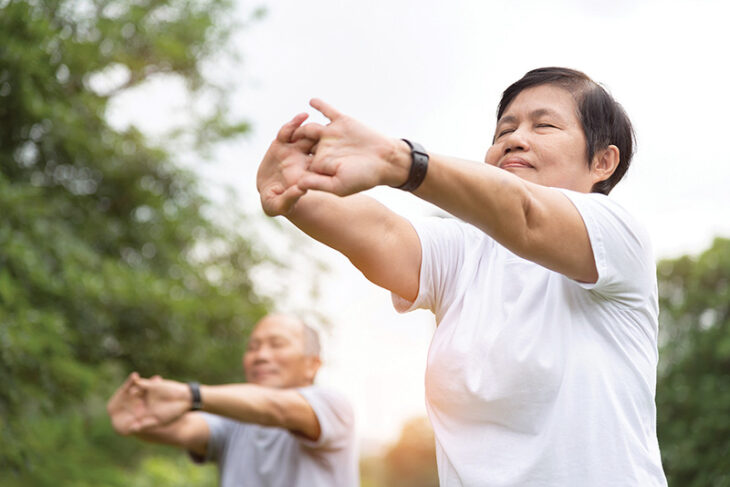By Dr. Eric Washington
The benefits of exercise and healthy eating in reducing various illnesses and associated deaths are widely accepted. Approximately 23 percent of adults ages 18-64 meet the recommended guidelines for exercise, according to the U.S. Department of Health and Human Services; however, only 18.5 percent of adults in Mississippi routinely meet them. According to HHS, the guidelines include:
- Muscle strengthening exercises at least twice weekly
- 150-300 minutes of moderate aerobic exercises weekly — or
- 75-150 minutes of vigorous aerobic exercises weekly
These are baseline recommendations and should be attainable by most adults. However, based on the data above, that’s obviously easier said than done. From illnesses and medical conditions to “gym intimidation,” busy schedules, and everything in between, we all have our reasons for not exercising. Life happens, and so do injuries, but that doesn’t mean you have to stop your workouts entirely.
There are several types of orthopaedic sports injuries, so getting to the bottom of what’s going on is important. After consulting with a sports medicine specialist and getting the green light to exercise, you’ll want to ease back into it. While rehabbing, some common activities I recommend include swimming, biking, and other low-impact aerobic and resistance workouts. The overall process is to:
Mobilize the joint and surrounding muscles. Skip the weights and use only your body weight to evaluate how the joint feels and the amount of movement you can perform safely and without pain.
Strengthen the stabilizing muscles with slow and steady controlled movement, exercises that focus on maintaining your balance and use of little to only body weight and high repetitions.
Practice correct positioning and movement patterns. Exercises based on movement patterns can enhance mobility while promoting stability. Your body is designed to move, and efficient movement involves numerous muscles and joints working together simultaneously. The human body has five basic movement patterns: bending, single-sided, rotational, pushing and pulling. Implementing functional training into your workout corrects faulty form, increases muscle definition, enhances neuromuscular strength and helps prevent injuries.
Slowly build strength through volume and load. Increasing volume slowly over time will produce sustainable, long-term gains compared to a rapid increase in volume. Work to make incremental increases from week to week by adding a small percentage of weight.
Consistently monitor for pain and discomfort. If you feel any pain or discomfort, that’s a movement you need to avoid while you heal. Ultimately, it’s imperative to take things slow, be consistent with your rehab and ease back into workouts.
My colleagues and I routinely encourage patients to start or maintain regular exercise regimens to improve overall health, as it can favorably impact some of our more common and disabling chronic diseases such as obesity, diabetes, cardiac disease and hypertension. However, following an orthopaedic injury, it’s important to consult with a physician before starting or resuming physical activity, as preventing further injury is the top priority.
Dr. Eric Washington joined Bienville Orthopaedic Specialists in December 2002. He generally works out of their Pascagoula office and Singing River Hospital, and he is board certified in orthopaedic surgery. Reach him at (228) 230- BONE (2663).


